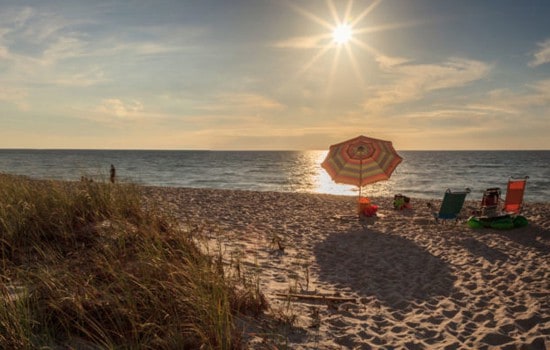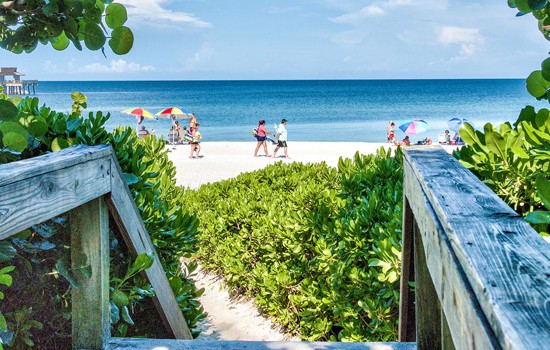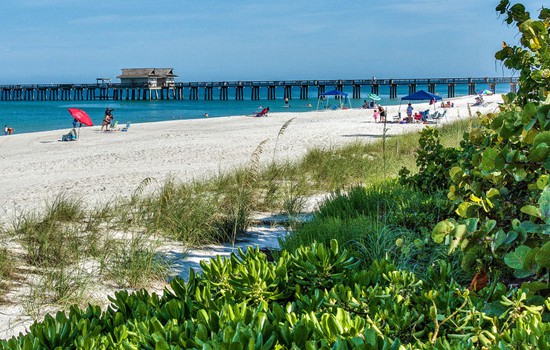Headed to Florida? The good news is that you may just spot a sea turtle.
Sea turtles nest in regions around the Florida peninsula. Both males and females will migrate to nesting areas, in the Sunshine state, to breed, generally in the area where they were born. It is not known exactly how adult turtles are able to navigate to their natal (birth) beaches, however, researchers think they may use a number of clues including ocean currents, the earth’s magnetic field, and water chemistry.
Below are the five species of sea turtles that frequent Florida.
1. LOGGERHEAD
This is Florida’s most common sea turtle and it got its name from its large block-like head. It’s among the larger species of sea turtle. The adults have an average weight of 275 pounds, with a shell that’s around 3 feet long. The turtle’s carapace, a ruddy brown on its top and a creamy yellow beneath, is extremely broad close to the turtle’s and it will taper near its rear. Each flipper has 2 claws. Just like all sea turtles, the female’s tail is short, and the male’s is long. But the tail of young turtles can’t be externally determined.
The loggerhead’s powerful jaws let it crush crabs, clams and the other animals on its diet easily. It swims slowly and sometimes will be eaten or injured by sharks. It’s not uncommon to see turtles with missing shell chunks or flippers. However, what they lack in speed they make up in stamina.
2. GREEN TURTLE
This turtle is named for the green color of their body fat and they used to be prized by European settlers for their hide, eggs, calipee and meat. Merchants also discovered that they could keep them alive by turning the turtles over onto the turtles’ backs in an area that was shaded. That made it easy for them to ship the fresh turtles to the markets overseas.
The green turtles are a lot more streamlined when compared with loggerheads and they weigh around 350 pounds with a smaller head, compared with the size of their body. The shell is oval shaped and is olive-brown in color with streaks that are darker going through the shell. The lower shell’s yellow.
Green turtles are found during the day in shallow flats and seagrass meadows and return every evening to their usual sleeping quarters-scattered rock ledges, oyster bars, and coral reefs. Adult green turtles are unique among sea turtles in that they are largely vegetarians, consuming primarily seagrasses and algae. Approximately 100 to 1,000 green turtles nest on Florida’s beaches each year from June through late September.
3. LEATHERBACK
These sea turtles are unique and fascinating. Leatherbacks are bigger, dive deeper, travel further and tolerate water that is colder compared to other types of sea turtles. Leatherbacks average 6 feet in length and weigh between 500-1,000 pounds. However, there was a leatherback that measured almost 10 feet in length and weighed over 2,000 pounds.
The leatherback turtle looks a lot different than other types of sea turtle. Rather than having a shell that’s covered with shields or scales, the leatherback has a skin that’s firm and leathery and the skin has seven ridges that run down the back lengthwise. They usually are black with blue, white and pink splotches. They don’t have any claws upon their flippers. They eat animals with soft bellies like jellyfish. They have stiff spines in their scissor-like jaws and throat cavity. These spines help with swallowing prey that’s slippery and soft. When a young leatherback is in captivity, they often eat double their weight each day in jellyfish.
Leatherbacks are able to descend over 3,000 feet as well as traveling over 3,000 miles from the beach where they nest. They can be found in the Indian, Pacific, and Atlantic oceans and as far as Labrador and Alaska. It’s been found by researchers that they’re able to regulate the temperature of their body and capable of surviving in colder waters. 30 – 60 leatherback turtles nest in Florida each year.
4. KEMP’S RIDLEY
This sea turtle is the most rare and endangered. There’s only one major beach for nesting and it’s known as Rancho Nuevo on the gulf. This nesting beach’s location had been a scientific mystery until a film was discovered. This 1947 film showed 40,000 of these turtles coming ashore during the day to lay their eggs. Sadly, this grandeur is no more, since there are less than 1,000 females who are nesting left worldwide.
These turtles are small, and they only weigh from 85 – 100 pounds. Their carapace is 2 – 2.5 feet. However, they are tenacious and tough. Their diet is mostly made of crustaceans like crabs.
Back in the 1980s, a lot of eggs were taken from the Rancho Nuevo beach, then incubated using containers. When the hatchlings emerged, then were raised for nearly a year in Galveston Texas in a facility dedicated to marine life. When they were released, they hoped that the turtles would have a better survival chance than if they’d hatched in the wild. However, one of the big problems with the problem was that the turtles’ sex had been influenced by the temperature of incubation so that the hatchlings were all males. It also had been discovered that the turtles hatched in captivity weren’t behaving like the ones in the wild. It’s been considered that this type of program for conservation isn’t appropriate.
5. HAWKSBILL
This sea turtle’s an agile, small turtle with a gorgeous shell. Unfortunately, a lot of people love this gorgeous shell and use it for jewelry making, hair ornaments and various other things, although this type of trade’s banned in a lot of the world.
These turtles weigh between 100 – 200 pounds at their prime and their length is about 30 inches. The carapace is shaded with an amber background and markings of brown and black. The armor’s shields overlap and the carapace’s rear is serrated. The body of the hawksbill’s oval in shape, with a narrow head. The name of the turtle comes from the raptor-like jaws. These powerful jaws are adapted perfectly for collecting sponges, its preferred food. Even though sponges have a composition of needles that are glasslike, this isn’t a problem for the turtle.
These beautiful turtles are found in reefs, lagoons, estuaries in the Indian, Pacific and Atlantic oceans and bays. They’re spotted frequently by the divers off the Leys and there are nests found from between the Keys and the Canaveral National Seashore.
Final Thoughts
These are some of the beautiful sea turtles that you can see in Florida. If you’re interested in seeing loggerheads laying their eggs, a turtle walk is a good choice. It’s something you’ll always remember.
Planning a Trip to Florida?
After seeing Florida’s sea turtles, return to the beauty and comfort of a home from Naples Florida Vacation Homes. We have a wide selection of homes located all over the Naples area. Whether you’re hoping to squeeze in a few rounds of golf during your visit or you’d like to relax by a private pool, you’ll find the perfect home to fit your needs.
Check out our rentals and book today! We look forward to having you.









